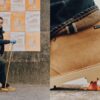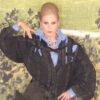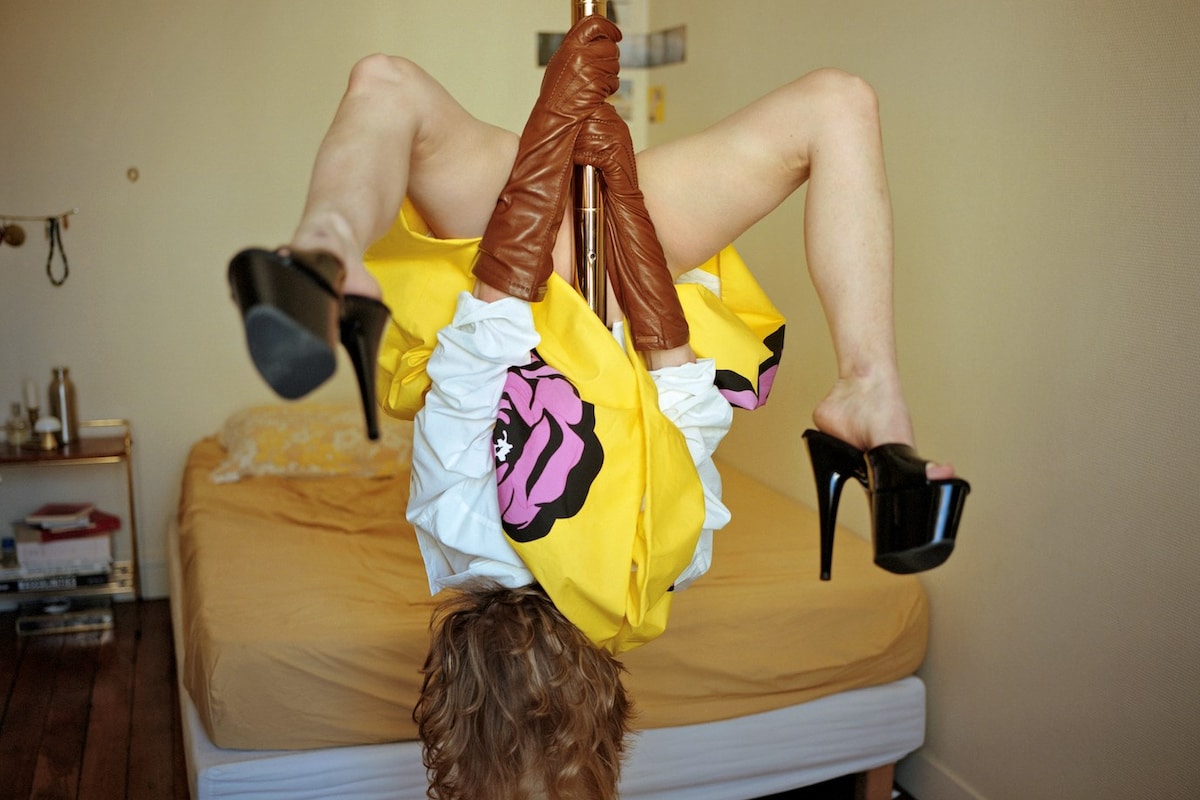
Rewrite
As Michella Bredahl’s work goes on display at Huis Marseille in Amsterdam, she tells us how significant her mother and their complex home life has been in her photographic journey
“There’s a noticeable point where the photos stop being of me and start being by me,” says photographer Michella Bredahl as she reflects on her earliest memories behind the lens. “My mother had always photographed me, but when I was about seven, something changed. She gave me the camera and I began photographing her – cooking in the kitchen, sleeping in the bedroom. That’s how it all began. In the rooms of our home.”
“We didn’t have much growing up, and I think, deep down, I believed that if I just kept photographing, maybe it would lead us somewhere, somewhere better,” says the Danish photographer, who continued to take photos as she grew up. “Sometimes it even feels like I’ve held on to a camera out of desperation too. Like it was the one thing I had, the one thing I could rely on to make sense of the world.”
Family and femininity quickly became her focal point. Some years on and Bredahl is known for her intimate and unguarded portraits of people at home. Her expansive oeuvre is now on display at Huis Marseille, Amsterdam, in a solo exhibition titled Rooms We Made Safe, that will run until 8 February next year.
The exhibition (Bredahl’s first museum exhibition) offers an honest glimpse into family life: the moments of joy, the intimacies, the fragilities and the struggles, bringing together photographs taken by her mother, Maria Bredahl, from before she was born and those taken more recently. “The idea behind introducing my mother’s photographs together with my work was to explore how things are tied together through time – memory, relationships, the body – as well as to examine how deeply connected my practice is to my mother.”
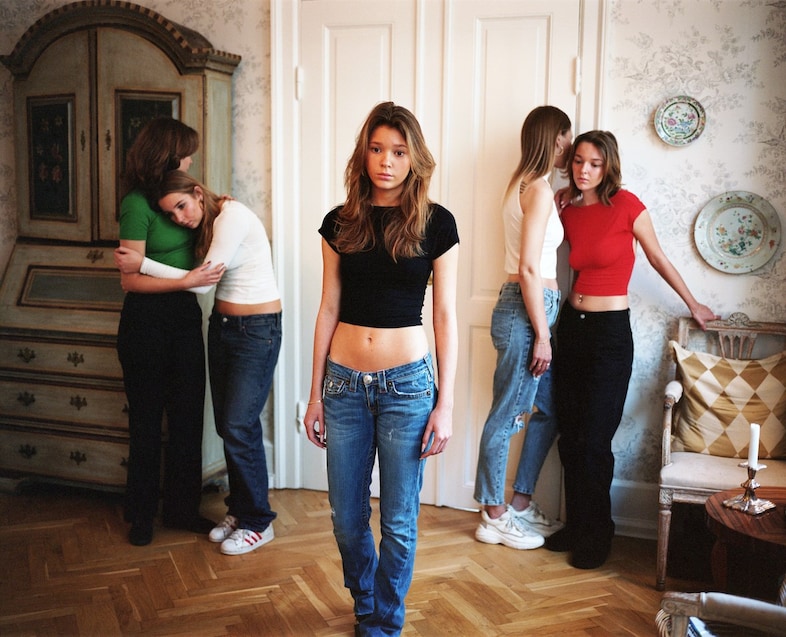
Bredahl was raised single-handedly by her mother, who had to work several jobs to stay afloat. “She had to put her own dreams aside,” the photographer tells us, “she never had a chance to pursue her creativity.” Photography was something that Maria enjoyed in private, rarely showing her images to anyone with the exception of her two daughters. “I think I inherited a curiosity and excitement about people and life from my mother, her desire to remember everything by capturing it in a photo. That’s what drew her to photography. It’s probably what drew me to it as well.”
“She used to drop off film rolls at the supermarket and I was always so excited to go back with her to pick them up,” Bredahl writes fondly in a book published by Verlag der Buchhandlung Walther and Franz König in tandem with the exhibition. Sharing its name with the exhibition, the book, which is designed by Kühle and Mozer, includes a text by Stephanie LaCava, as well as writing by the photographer and memories and musings from her mother.
“We never put the photographs in albums; they stayed in those colourful envelopes with printed dates, stored in a white sideboard. Sometimes I would find them, spread them out on the floor, and just look,” she recalls. “The colours of the rooms in our home, for example, feel significant. I’ve come to realise how deeply they’ve influenced me, visually and emotionally, even years later.”
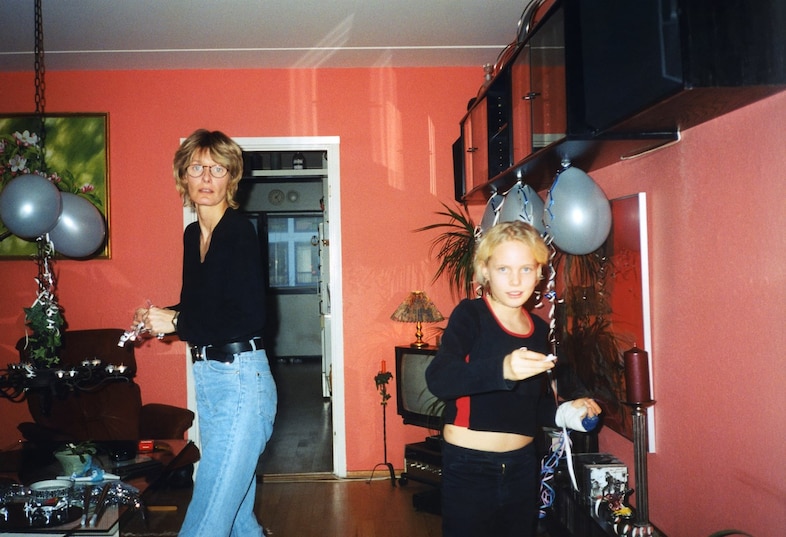
Colour manifests itself through much of Bredahl’s imagery, from the garments worn by her subjects to the brightly painted walls and furnishings of their surroundings. It has become something that is synesthetically intertwined with the breadth of emotion she felt when she was young. “Every room in our home was a different colour – blue, yellow, green; our bathroom was peach. So all my memories from our time in that apartment are closely connected to colour – colour makes me feel at home.”
The museum’s director Nanda van den Berg was inspired by the inherited nature of Bredahl’s photography. “She listened when I spoke about my mother and trusted my intuition, making space for her story too,” says Bredahl. Two of the museum’s rooms are dedicated to her mother’s self-portraits from the 1970s and 80s, taken before Bredahl was born. The photos they took together in the 90s feature too. “While my mother’s photos were of course meaningful to her, she never understood why they might move other people,” says Bredahl, noting that her mother never sought the spotlight.
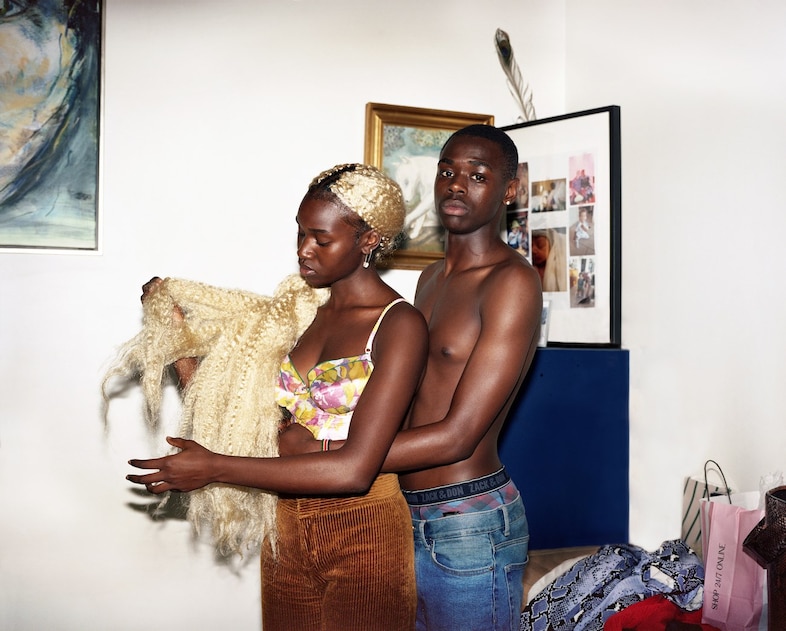
Maria was an addict, which threatened the sanctity of their homelife. She looks back on their photos with sadness and guilt. “What she sees is a mother failing, someone unable to step aside from their own struggle to be fully present for her children,” says Bredahl. “Addiction is complex. It’s not just a matter of stopping, it’s rooted in pain, trauma and survival. Underneath the addiction was a woman in deep pain, trying to hide it, trying to cope. I think that must be one of the most devastating realisations for a mother: to feel that your love wasn’t enough to protect your kids from harm, especially harm that came from you. But it’s not just her fault. It’s also the fault of a society that failed her, a society that fails many women, especially single mothers, especially those living with addiction and those whose beauty or vulnerability is exploited rather than protected.”
“When I see these images, I don’t just see pain, I see love. I see a mother who, in spite of everything, stood up again after falling into one of the darkest places imaginable. That resilience is part of the story too. That’s what I carry with me.”
These moments of insecurity continue to inform Bredahl, even today. “It made me curious about the meaning of space, of safety, of intimacy,” she says. “About what it means to feel at home in your own body, or life. This longing for a safe space, emotionally and physically, runs through everything I create.” Her photography has allowed her to transform memories of a difficult childhood into a poignant study of vulnerability. “Today my mother is clean and is working as an addictions counsellor, which makes me incredibly proud.”
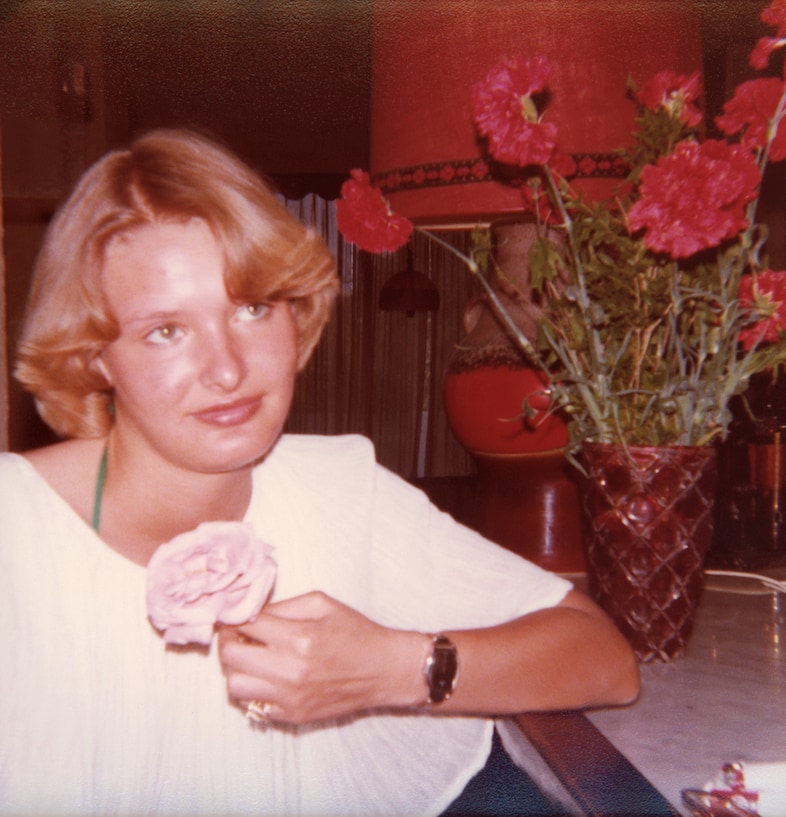
Bredahl has also been working on an autobiography titled My Heroine which puts her relationship with her mother under close scrutiny while exploring how creativity and struggle can be passed down through generations. “Weaving together text and imagery, My Heroine is a complex portrayal of my mother, who was and remains my hero, someone who lost hope then found it again, as we, as a family, move between stakes of brokenness and wholeness,” she says.
“I’ve always felt what I do is an extension of my mother. The first photographs I ever took were with her and of her. We photographed each other – our everyday,” she says. “Those moments have stayed with me. Every time I pick up a camera I remember.”
For Bredahl, the exhibition was an opportunity to reverse the roles. “My mother has always carried this deep feeling of failure, and by including her photographs, her writing, her voice, I hope to reflect her story back to her in a different light, to help her see how extraordinary she really is.”
Rooms We Made Safe is at Huis Marseille, Museum for Photography, Amsterdam until 8 February 2026. In 2026, the exhibition will travel to Kunstmuseum Brandts and the Museum of National History at Frederiksborg Castle in Denmark. The book, published by Verlag der Buchhandlung Walther and Franz König, is out now.
in HTML format, including tags, to make it appealing and easy to read for Japanese-speaking readers aged 20 to 40 interested in fashion. Organize the content with appropriate headings and subheadings (h1, h2, h3, h4, h5, h6), translating all text, including headings, into Japanese. Retain any existing
tags from
As Michella Bredahl’s work goes on display at Huis Marseille in Amsterdam, she tells us how significant her mother and their complex home life has been in her photographic journey
“There’s a noticeable point where the photos stop being of me and start being by me,” says photographer Michella Bredahl as she reflects on her earliest memories behind the lens. “My mother had always photographed me, but when I was about seven, something changed. She gave me the camera and I began photographing her – cooking in the kitchen, sleeping in the bedroom. That’s how it all began. In the rooms of our home.”
“We didn’t have much growing up, and I think, deep down, I believed that if I just kept photographing, maybe it would lead us somewhere, somewhere better,” says the Danish photographer, who continued to take photos as she grew up. “Sometimes it even feels like I’ve held on to a camera out of desperation too. Like it was the one thing I had, the one thing I could rely on to make sense of the world.”
Family and femininity quickly became her focal point. Some years on and Bredahl is known for her intimate and unguarded portraits of people at home. Her expansive oeuvre is now on display at Huis Marseille, Amsterdam, in a solo exhibition titled Rooms We Made Safe, that will run until 8 February next year.
The exhibition (Bredahl’s first museum exhibition) offers an honest glimpse into family life: the moments of joy, the intimacies, the fragilities and the struggles, bringing together photographs taken by her mother, Maria Bredahl, from before she was born and those taken more recently. “The idea behind introducing my mother’s photographs together with my work was to explore how things are tied together through time – memory, relationships, the body – as well as to examine how deeply connected my practice is to my mother.”

Bredahl was raised single-handedly by her mother, who had to work several jobs to stay afloat. “She had to put her own dreams aside,” the photographer tells us, “she never had a chance to pursue her creativity.” Photography was something that Maria enjoyed in private, rarely showing her images to anyone with the exception of her two daughters. “I think I inherited a curiosity and excitement about people and life from my mother, her desire to remember everything by capturing it in a photo. That’s what drew her to photography. It’s probably what drew me to it as well.”
“She used to drop off film rolls at the supermarket and I was always so excited to go back with her to pick them up,” Bredahl writes fondly in a book published by Verlag der Buchhandlung Walther and Franz König in tandem with the exhibition. Sharing its name with the exhibition, the book, which is designed by Kühle and Mozer, includes a text by Stephanie LaCava, as well as writing by the photographer and memories and musings from her mother.
“We never put the photographs in albums; they stayed in those colourful envelopes with printed dates, stored in a white sideboard. Sometimes I would find them, spread them out on the floor, and just look,” she recalls. “The colours of the rooms in our home, for example, feel significant. I’ve come to realise how deeply they’ve influenced me, visually and emotionally, even years later.”

Colour manifests itself through much of Bredahl’s imagery, from the garments worn by her subjects to the brightly painted walls and furnishings of their surroundings. It has become something that is synesthetically intertwined with the breadth of emotion she felt when she was young. “Every room in our home was a different colour – blue, yellow, green; our bathroom was peach. So all my memories from our time in that apartment are closely connected to colour – colour makes me feel at home.”
The museum’s director Nanda van den Berg was inspired by the inherited nature of Bredahl’s photography. “She listened when I spoke about my mother and trusted my intuition, making space for her story too,” says Bredahl. Two of the museum’s rooms are dedicated to her mother’s self-portraits from the 1970s and 80s, taken before Bredahl was born. The photos they took together in the 90s feature too. “While my mother’s photos were of course meaningful to her, she never understood why they might move other people,” says Bredahl, noting that her mother never sought the spotlight.

Maria was an addict, which threatened the sanctity of their homelife. She looks back on their photos with sadness and guilt. “What she sees is a mother failing, someone unable to step aside from their own struggle to be fully present for her children,” says Bredahl. “Addiction is complex. It’s not just a matter of stopping, it’s rooted in pain, trauma and survival. Underneath the addiction was a woman in deep pain, trying to hide it, trying to cope. I think that must be one of the most devastating realisations for a mother: to feel that your love wasn’t enough to protect your kids from harm, especially harm that came from you. But it’s not just her fault. It’s also the fault of a society that failed her, a society that fails many women, especially single mothers, especially those living with addiction and those whose beauty or vulnerability is exploited rather than protected.”
“When I see these images, I don’t just see pain, I see love. I see a mother who, in spite of everything, stood up again after falling into one of the darkest places imaginable. That resilience is part of the story too. That’s what I carry with me.”
These moments of insecurity continue to inform Bredahl, even today. “It made me curious about the meaning of space, of safety, of intimacy,” she says. “About what it means to feel at home in your own body, or life. This longing for a safe space, emotionally and physically, runs through everything I create.” Her photography has allowed her to transform memories of a difficult childhood into a poignant study of vulnerability. “Today my mother is clean and is working as an addictions counsellor, which makes me incredibly proud.”

Bredahl has also been working on an autobiography titled My Heroine which puts her relationship with her mother under close scrutiny while exploring how creativity and struggle can be passed down through generations. “Weaving together text and imagery, My Heroine is a complex portrayal of my mother, who was and remains my hero, someone who lost hope then found it again, as we, as a family, move between stakes of brokenness and wholeness,” she says.
“I’ve always felt what I do is an extension of my mother. The first photographs I ever took were with her and of her. We photographed each other – our everyday,” she says. “Those moments have stayed with me. Every time I pick up a camera I remember.”
For Bredahl, the exhibition was an opportunity to reverse the roles. “My mother has always carried this deep feeling of failure, and by including her photographs, her writing, her voice, I hope to reflect her story back to her in a different light, to help her see how extraordinary she really is.”
Rooms We Made Safe is at Huis Marseille, Museum for Photography, Amsterdam until 8 February 2026. In 2026, the exhibition will travel to Kunstmuseum Brandts and the Museum of National History at Frederiksborg Castle in Denmark. The book, published by Verlag der Buchhandlung Walther and Franz König, is out now.
and integrate them seamlessly into the new content without adding new tags. Ensure the new content is fashion-related, written entirely in Japanese, and approximately 1500 words. Conclude with a “結論” section and a well-formatted “よくある質問” section. Avoid including an introduction or a note explaining the process.
